QuestionHi Kaden,
I was thinking over using Calcium Suppliment with D3 and the ones without in the BML. Which ones is better and what is the differences in the long run. Because as reptiles they need the D3 to aid them in the calcium absorption processes and they get it from the UVB of the sun. Gliders do not get as much sunlight as reptiles thus was thinking that maybe the Calcium Suppliment with D3 is better as gliders need them too.
Thank You
Have A Nice Day
Jem
AnswerTo be perfectly honest there are soooo many different sugar glider diets out there it is totally understandable that new owners get so confused..!!
One worry I have is that I have always been told NO VITAMIN D, and NO PHOSPHOROUS
The simple version of difference is one has D and one does NOT..
Things become more complicated bio-chemically when we consider the roles played by Vitamin D and phosphorus. Vitamin D has a major effect on increasing calcium absorption from the intestinal tract. Now for the sake of keeping an extremely complicated process simple, suffice it to say that through transitional phases in the body, Vitamin D ultimately aids in the absorption of calcium through a series of reactions in both the liver and the kidneys.
It is through the transformation of Vitamin D that calcium is able to properly absorb. Without Vitamin D in the diet, calcium is an element that is relatively insoluble and difficult for the body to use.
When choosing foods to feed your sugar glider, you should note the nutritional analysis on the food label or research other sources of available information on fresh foods offered. In addition to ensuring that calcium levels are sufficient in your pet's diet, you should also note the phosphorus levels.
Phosphorus is an element that is easily absorbed by the intestines, but it can combine with calcium to form calcium phosphate compounds that are not absorbed, but excreted in the feces. This process is especially prevalent if excess calcium is present. Elevated levels of phosphorus can also negatively effect the proper transformation of Vitamin D into a usable form, due to the effects of excessive phosphorus on the production of parathyroid hormone. I wish to reiterate here that I am taking some liberties to condense and simplify very complex bio-chemical functions to emphasize a point. Too much dietary phosphorus ultimately inhibits the effectiveness of the body to absorb and utilize calcium in a manner supportive to good animal health.
As a sugar glider owner, it is important that you understand that a well balanced diet is critical to your pets long term health. One of the components of a good dietary plan will include provisions for proper amounts and ratios of calcium, phosphorus, and Vitamin D in the foods that your glider eats. You want to maintain a positive calcium to phosphorus ratio.
Another suggestion is to stay away from pelleted foods.. gliders eat nectar in the wild.. not pellets.. so keeping with a traditional liquid diet is always advisable..
The most popular diets that you will most likely come across are the BML & the Original Ledbeaters Diets.. I personally feed a modified Ledbeaters myself & have yet to experience ANY ISSUES with either my personal Gliders or any rescues we have had turned in.. This has worked wonders for us for many years now.. not only is it easy..!! but if doubled up it will make enough to freeze into smaller containers for a month or more depending on how many gliders you own.. one thing to note is this does NOT expand when frozen so no worries about filling it right up to the top..!!
My Mixture is as follows:
1/2 c Juice (anything all natural or no sugar)
1/2 c Honey
1 Boiled Egg (with shell)
1/2 c baby cereal (rice/oatmeal/mixed)
1 jar chicken/turkey baby food
1/2 c Wheat Germ
1 tsp Calcium (NO PHOSPHOROUS no D3..??) *maybe not any more!*
1/2 tsp Vionate Multi-Vitamin
1 tsp of GliderAde (if avail but not necessary)
The CALCIUM & VIONATE will usually NOT BE FOUND in a local pet shop
and therefore will need to be ordered online..
I have successfully used the following companies:
PetRX.com = http://www.petrx.com/search.aspx?find=vionate
ReptileSupply.com = http://www.reptilesupply.com/product.php?products_id=119 or http://www.reptilesupply.com/product.php?products_id=2670
Of course we also feed either FRESH or FROZEN Veggies 4 or more times a week as well as a variety of fresh fruits and meal worms on occasion as a treat..
The key is to think VARIETY.. meaning that unlike your average cat or dog our suggies LOVE VARIETY in their diets.. they don't like the BORING and ROUTINE..!! So feel free to switch things up from time to time.. Like the FLAVOR of juice you use in the mixture.. some nights give them a little cottage cheese.. or applesauce..
But stay away from the following:
Nuts (or any high fat content foods)
Lettuce
Cheese (or any dairy other than yogurt)
Corn (or any foods where the Phosphorus ratio is higher than the calcium ratio)
Bird seeds or parrot food
Grapes
and of course Chocolate..!!
I think that no matter which diet one chooses as long as the basic protein / calcium ingredients are there for the optimum health of the glider each one should be nutritionally balanced & complete overall.

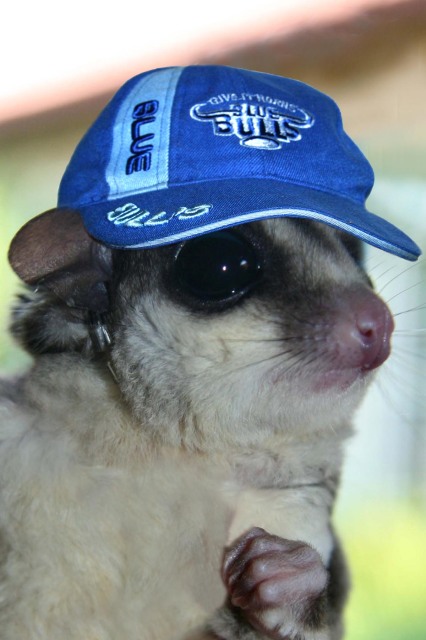 Sugar glider deep sleep concern!
QuestionGizmo
QUESTION: Since Gizmos operation(n
Sugar glider deep sleep concern!
QuestionGizmo
QUESTION: Since Gizmos operation(n
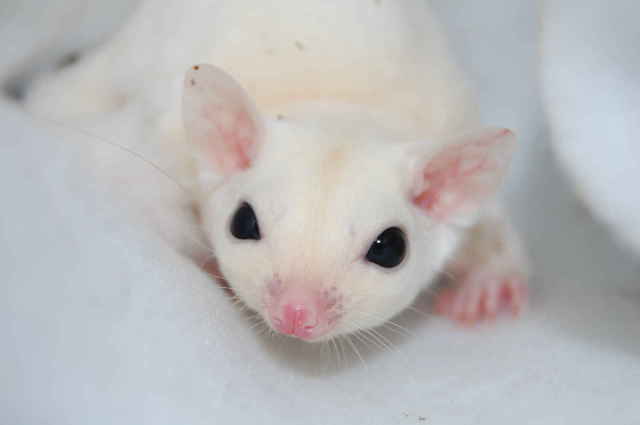 Does Sugar Gliders will effect our health?
QuestionHi Kaden,
I would like to know if sugar glider
Does Sugar Gliders will effect our health?
QuestionHi Kaden,
I would like to know if sugar glider
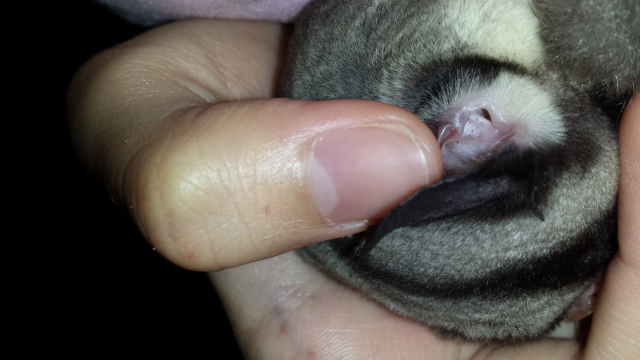 sugar glider ear mites?
Question
ear ear
hi.
can I know how does e
sugar glider ear mites?
Question
ear ear
hi.
can I know how does e
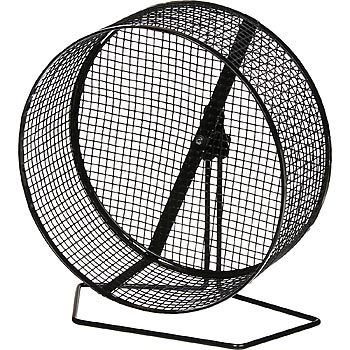 sugar glider info
Questionwhat do sugar gliders do at night and what are
sugar glider info
Questionwhat do sugar gliders do at night and what are
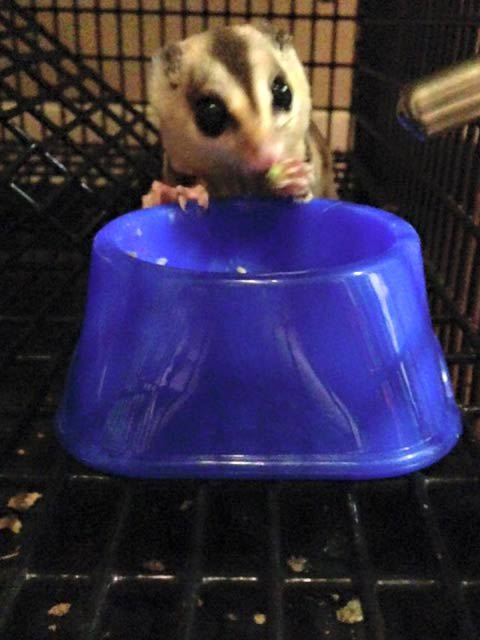 Untamed Rescued Sugar Gliders
Question
Ivey Chloe
Hi, I just rescued two
Untamed Rescued Sugar Gliders
Question
Ivey Chloe
Hi, I just rescued two